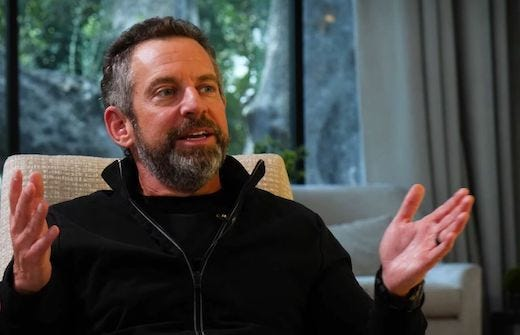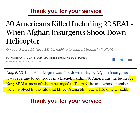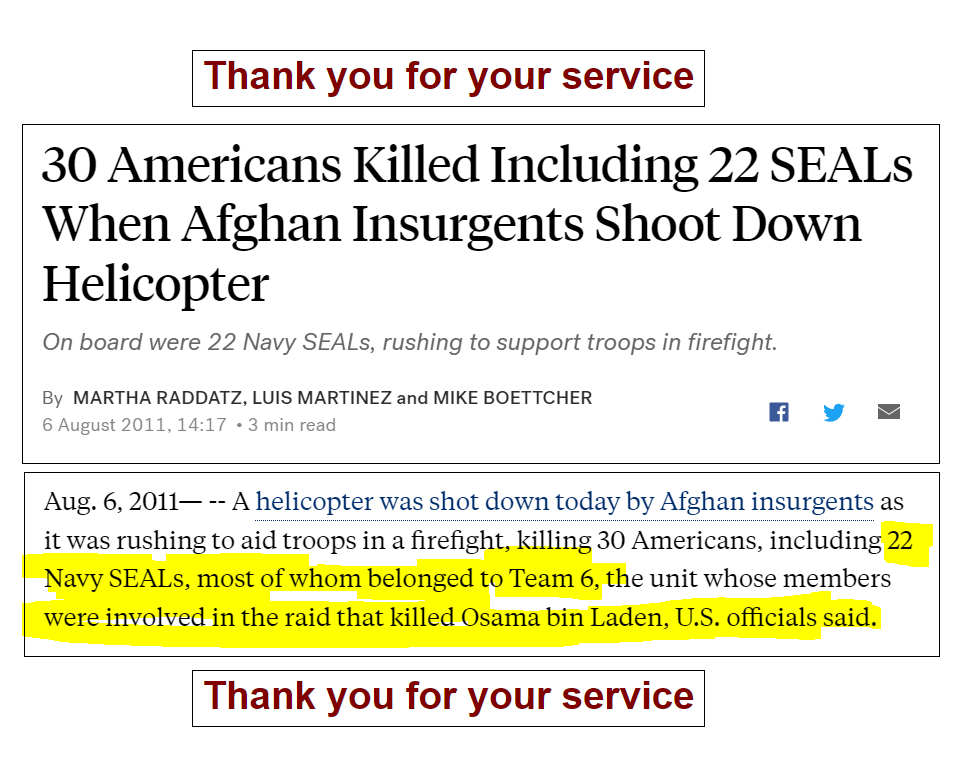
Do low IQ FED agents that pretend to be Nazis know who owned the company that produced Zyklon B?
We all know that Zyclon B was produced by IG Farben
BUT who owned IG Farben at the time?
Farben was Hitler and Hitler was Farben. (Senator Homer T. Bone to Senate Committee on Military Affairs, June 4, 1943.)
German bankers on the Farben Aufsichsrat (the supervisory Board of Directors) in the late 1920s included the Hamburg banker Max Warburg, whose brother Paul Warburg was a founder of the Federal Reserve System in the United States. Not coincidentally, Paul Warburg was also on the board of American I. G, Farben’s wholly owned U.S. subsidiary. In addition to Max Warburg and Hermann Schmitz, the guiding hand in the creation of the Farben empire, the early Farben Vorstand included Carl Bosch, Fritz ter Meer, Kurt Oppenheim and George von Schnitzler.2 All except Max Warburg were charged as “war criminals” after World War II.
The full story of I.G. Farben and its worldwide activities before World War II can never be known, as key German records were destroyed in 1945 in anticipation of Allied victory.
In 1939, out of 43 major products manufactured by I.G., 28 were of “primary concern” to the German armed forces.
The U.S. War Department also accused I. G. Farben and its American associates of spearheading Nazi psychological and economic warfare programmes through dissemination of propaganda via Farben agents abroad, and of providing foreign exchange for this Nazi propaganda. Farben’s cartel arrangements promoted Nazi economic warfare — the outstanding example being the voluntary Standard Oil of New Jersey restriction on development of synthetic rubber in the United States at the behest of I. G. Farben.
In 1945 Dr. Oskar Loehr, deputy head of the I.G. “Tea Buro,” confirmed that I. G. Farben and Standard Oil of New Jersey operated a “preconceived plan” to suppress development of the synthetic rubber industry in the United States, to the advantage of the German Wehrmacht and to the disadvantage of the United States in World War II.
Who were the prominent Wall Street establishment financiers who directed the activities of American I.G, the I.G. Farben affiliate in the United States promoting Nazi propaganda?
Directors of American I.G. were not only prominent in Wall Street and American industry but more significantly were drawn from a few highly influential institutions. (See chart above.) (1)Federal Reserve Bank of New Yord (2)Ford Motor Company (3)Bank of Manhatan (4)Standard Oil N Jersey
Several basic observations can be made from this evidence. First, the board of American I.G. had three directors from the Federal Reserve Bank of New York, the most influential of the various Federal Reserve Banks. American I.G. also had interlocks with Standard Oil of New Jersey, Ford Motor Company, Bank of Manhattan (later to become the Chase Manhattan), and A.E.G. (German General Electric). Second, three members of the board of this American I.G. were found guilty at Nuremberg War Crimes Trials. These were the German, not the American, members. Among these Germans was Max Ilgner, director of the I.G. Farben N. W. 7 office in Berlin, i.e., the Nazi pre-war intelligence office. If the directors of a corporation are collectively responsible for the activities of the corporation, then the American directors should also have been placed on trial at Nuremberg, along with the German directors — that is, if the purpose of the trials was to determine war guilt. Of course, if the purpose of the trials had been to divert attention away from the U.S, involvement in Hitler’s rise to power, they succeeded very well in such an objective.
All quotes are from WALL ST AND THE RISE OF HITLER
Hitler's Secret Backers -- The Financial Sources of National Socialism is a book first published in 1933, from an pseudononymous author who used the name of SIDNEY WARBURG. The book has insider knowledge on Wall St. financing Hitler, the background and the reason why and what Wall St expected from Hitler. The principal theory is that this book was created by either France, Russia or other government or faction of government (even USA why not) who knew Wall St was financing Hitler and preparing him for war, and wanted to prevent it. This obviously failed.
One thing to mention is that this book was pulled away from libraries and shops only a few days after it was published. But 3 copies survived, and one of the copies (the original book was published in Dutch!) was translated to German, and from this german translation it was translated into English.
I discovered this book only few days ago, from reading WALL ST AND THE RISE OF HITLER by A C. Sutton. He has an entire chapter on this book. Here you can see some quotes/fragments from this chapter: https://scored.co/c/Conspiracies/p/15JnYrQl1s/roundtable-discussion-hitler-and/c/4OeznJ9xxD6
Wikipedia also has a page on the book. https://en.wikipedia.org/wiki/Sydney_Warburg
This is the link where to download the book in pdf. Click GET. http://library.lol/main/9E3D4329ADA5FB24C581ED57D9F59BE4
Quotes from CHAPTER TEN: The Myth of “Sidney Warburg” (from WALL ST AND THE RISE OF HITLER)
The question posed in this chapter is the accusation that some Wall Street financiers (the Rockefellers and Warburgs specifically have been accused) directly planned and financed Hitler’s takeover in 1933, and that they did this from Wall Street. On this question the so-called myth of “Sidney Warburg” is relevant. Prominent Nazi Franz von Papen has stated in his Memoirs-.3
. . . the most documented account of the National Socialists’ sudden acquisition of funds was contained in a book published in Holland in 1933, by the old established Amsterdam publishing house of Van Holkema & Warendorf, called De Geldbronnen van Het Nationaal-Socialisme (Drie Gesprekken Met Hitler) under the name “Sidney Warburg.”
A book with this title in Dutch by “Sidney Warburg” was indeed published in 1933, but remained on the bookstalls in Holland only for a matter of days. The book was purged.4 One of three surviving original copies was translated into English. The translation was at one time deposited in the British Museum, but is now withdrawn from public circulation and is unavailable for research. Nothing is now known of the original Dutch copy upon which this English translation was based. The Second Dutch copy.... The third Dutch copy found its way to Switzerland and was translated into German. The German translation has survived down to the present day in the Schweizerisches Sozialarchiv in Zurich, Switzerland. A certified copy of the authenticated German translation of this Swiss survivor was purchased by the author in 1971 and translated into English. It is upon this English translation of the German translation that the text in this chapter is based.
Publication of the “Sidney Warburg” book was duly reported in the New York Times (November 24, 1933) under the title “Hoax on Nazis Feared.”
What does the book report? What does the book claim happened in Germany in the early 1930s? And do these events have any resemblance to facts we know to be true from other evidence?
A Synopsis of the Suppressed “Sidney Warburg” Book
The Financial Sources of National Socialism opens with an alleged conversation between “Sidney Warburg” and joint author/translator J. G. Shoup. “Warburg” relates why he was handing Shoup an English language manuscript for translation into Dutch and publication in Holland.
The first section of the book is entitled simply “1929.” It relates that in 1929 Wall Street had enormous credits outstanding in Germany and Austria, and that these claims had, for the most part, been frozen. ... In June 1929, a meeting took place between the members of the Federal Reserve Bank and leading American bankers to decide what to do about France, and particularly to check her call on German reparations. This meeting was attended (according to the “Warburg” book) by the directors of Guaranty Trust Company, the “Presidents” of the Federal Reserve Banks, in addition to five independent bankers, “young Rockefeller,” and Glean from Royal Dutch Shell. Carter and Rockefeller according to the text “dominated the proceedings. The others listened and nodded their heads.
The general concensus at the bankers’ meeting was that the only way to free Germany from French financial clutches was by revolution, either Communist or German Nationalist.
In return for preferred financial support, Hitler would be expected to conduct an “aggressive foreign policy and stir up the idea of revenge against France.” This policy, it was anticipated, would result in a French appeal to the United States and England for assistance in “international questions involving the eventual German aggression.” Hitler was not to know about the purpose of Wall Street’s assistance. It would be left “to his reason and resourcefulness to discover the motives behind the proposal.”
few weeks after Warburg’s return from Europe the Hearst newspapers showed “unusual interest” in the new German Nazi Party and even the New York Times carried regular short reports of Hitler’s speeches. Previously these newspapers had not shown too much interest, but that now changed.6 Also, in December 1929 a long study of the German National Socialist movement appeared “in a monthly publication at Harvard University.”
Part II of the suppressed “Financial Sources of National Socialism” is entitled “1931” and opens with a discussion of French influence on international politics. It avers that Herbert Hoover promised Pierre Laval of France not to resolve the debt question without first consulting the French government and [writes Shoup]: When Wall Street found out about this Hoover lost the respect of this circle at one blow. Even the subsequent elections were affected — many believed that Hoover’s failure to get re-elected can be traced back to the issue.7
In the next Warburg-Hitler meeting, Hitler argued that “the Soviets cannot miss our industrial products yet. We will give credit, and if I am not able to deflate France myself, then the Soviets will help me.” Hitler said he had two plans for takeover in Germany: (a) the revolution plan, and (b), the legal takeover plan. The first plan would be a matter of three months, the second plan a matter of three years. Hitler was quoted as saying, “revolution costs five hundred million marks, legal takeover costs two hundred million marks—what will your bankers decide?” After five days a cable from Guaranty Trust arrived for Warburg and is cited in the book as follows: Suggested amounts are out of the question. We don’t want to and cannot. Explain to man that such a transfer to Europe will shatter financial market. Absolutely unknown on international territory. Expect long report, before decision is made. Stay there. Continue investigation. Persuade man of impossible demands. Don’t forget to include in report own opinion of possibilities for future of man.
Warburg cabled his report back to New York and three days later received a second cablegram reading: Report received. Prepare to deliver ten, maximum fifteen million dollars. Advise man necessity of aggression against foreign danger.
The $15 million was accepted for the legal takeover road, not for the revolutionary plan. The money was transferred from Wall Street to Hitler via Warburg as follows—$5 million to be paid at Mendelsohn & Company, Amsterdam; $5 million at the Rotterdamsche Bankvereinigung in Rotterdam; and $5 million at “Banca Italiana.”
The third section of “Financial Sources of National Socialism” is entitled simply “1933.” The section records “Sidney Warburg’s” third and last meeting with Hitler — on the night the Reichstag was burned.
At this meeting Hitler informed Warburg of Nazi progress towards legal takeover. Since 1931 the Nationalist Socialist party had tripled in size. Massive deposits of weapons had been made near the German border in Belgium, Holland, and Austria — but these weapons required cash payments before delivery. Hitler asked for a minimum of 100 million marks to take care of the final step in the takeover programme. Guaranty Trust wired Warburg offering $7 million at most, to be paid as follows — $2 million to the Renania Joint Stock Company in Düsseldorf (the German branch of Royal Dutch), and $5 million to other banks. Warburg reported this offer to Hitler, who requested the $5 million should be sent to the Banca Italiana in Rome and (although the report does not say so) presumably the other $2 million was paid to Düsseldorf. The book concludes with the following statement from Warburg: I carried out my assignment strictly down to the last detail. Hitler is dictator of the largest European country. The world has now observed him at work for several months. My opinion of him means nothing now. His actions will prove if he is bad, which I believe he is. For the sake of the German people I hope in my heart that I am wrong. The world continues to suffer under a system that has to bow to a Hitler to keep itself on its feet. Poor world, poor humanity.
What would be the motive behind such a book?
The only motive that seems acceptable is that the unknown author had knowledge a war was in preparation and hoped for a public reaction against the Wall Street fanatics and their industrialist friends in Germany—before it was too late. Clearly, whoever wrote the book, his motive almost certainly was to warn against Hitlerian aggression and to point to its Wall Street source, because the technical assistance of American companies controlled by Wall Street was still needed to build Hitler’s war machine. The Standard Oil hydrogenation patents and financing for the oil from coal plants, the bomb sights, and the other necessary technology had not been fully transferred when the “Sidney Warburg” book was written. Consequently, this could have been a book designed to break the back of Hitler’s supporters abroad, to inhibit the planned transfer of U.S. war-making potential, and to eliminate financial and diplomatic support of the Nazi state. If this was the goal, it is regrettable that the book failed to achieve any of these purposes.

Quotes from WALL ST AND THE RISE OF HITLER
Chapter 3
The multinational giant General Electric has an unparalleled role in twentieth-century history. The General Electric Company electrified the Soviet Union in the 1920s and 1930s, and fulfilled for the Soviets Lenin’s dictum that “Socialism = electrification.”1 The Swope Plan, created by General Electric’s one-time president Gerard Swope, became Franklin D. Roosevelt’s New Deal, by a process deplored by one-time President Herbert Hoover and described in Wall Street and FDR.
In 1936 Senator James A. Reed of Missouri, an early Roosevelt supporter, became aware of Roosevelt’s betrayal of liberal ideas and attacked the Roosevelt New Deal programme as a “tyrannical” measure “leading to despotism, [and] sought by its sponsors under the communistic cry of ‘Social Justice.’ ” Senator Reed further charged on the floor of the Senate that Franklin D. Roosevelt was a “hired man for the economic royalists” in Wall Street and that the Roosevelt family “is one of the largest stockholders in the General Electric Company.”
As we probe into behind-the-scenes German interwar history and the story of Hitler and Naziism, we find both Owen D. Young and Gerard Swope of General Electric tied to the rise of Hitlerism and the suppression of German democracy. That General Electric directors are to be found in each of these three distinct historical categories—i.e., the development of the Soviet Union, the creation of Roosevelt’s New Deal, and the rise of Hitlerism—suggests how elements of Big Business are keenly interested in the socialization of the world, for their own purposes and objectives, rather than the maintenance of the impartial marketplace in a free society.
Walter Rathenau .... Walter Rathenau14 became a director of A.E.G. in 1899 and by the early twentieth century was a director of more than 100 corporations. Rathenau was also author of the “Rathenau Plan,” which bears a remarkable resemblance to the “Swope Plan” — i.e., FDR’s New Deal but written by Swope of G.E. In other words, we have the extraordinary coincidence that the authors of New Deal-like plans in the U.S. and Germany were also prime backers of their implementers: Hitler in Germany and Roosevelt in the U.S.
In January 1930 three G.E. men were elected to the board of A.E.G. — Clark H. Minor, Gerard Swope, and E. H. Baldwin — and International General Electric (I.G.E.) continued its moves to merge the world electrical industry into a giant cartel under Wall Street control.
In February General Electric focused on the remaining German electrical giant, Siemens & Halske, and while able to obtain a large block of debentures issued on behalf of the German firm by Dillon, Read of New York, G. E. was not able to gain participation or directors on the Siemens board. ... Siemens retained its independence from General Electric — and this independence is important for our story. The New York Times reported, "The entire press emphasizes the fact that Siemens, contrary to A.E.G., maintains its independence for the future and points out that no General Electric representative will sit on Siemens board of directors".
There is no evidence that Siemens, without American directors, financed Hitler. On the other hand, we have irrefutable documentary evidence (see document No. 391–395) that both German General Electric and Osram, both with American directors, financed Hitler.
In 1932 the American directors of A.E.G. were prominently connected with American banking and political circles as follows: GERARD SWOPE -- Chairman of International General Electric and president of General Electric Company, director of National City Bank (and other companies), director of A.E.G. and Osram in Germany. Author of FDR’s New Deal and member of numerous Roosevelt organizations.
OWEN D. YOUNG--Chairman of board of General Electric, and deputy chairman, Federal Reserve Bank of New York. Author, with J. P. Morgan, of the Young Plan which superseded the Dawes Plan in 1929. (See Chapter One.)
CLARK H. MINOR--President and director of International General Electric, director of British Thomson Houston, Compania Generale di Electtricita (Italy), and Japan Electric Bond & Share Company (Japan)
In brief, we have hard evidence of unquestioned authenticity (see previous document) to show that German General Electric contributed substantial sums to Hitler’s political fund. There were four American directors of A.E.G. (Baldwin, Swope, Minor, and Clark), which was 30 percent owned by International General Electric.
A.E.G. Avoids the Bombs in World War II
in 1939 the German electrical equipment industry was concentrated into a few major corporations linked in an international cartel and by stock ownership to two major U.S. corporations. This industrial complex was never a prime target for bombing in World War II. The A.E.G. and I.T.T. plants were hit only incidentally in area raids and then but rarely. The electrical equipment plants bombed as targets were not those affiliated with U.S. firms. It was Brown Boveri at Mannheim and Siemensstadt in Berlin — which were not connected with the U.S. — who were bombed.
That the A.E.G. plants in Germany were not bombed in World War II was confirmed by the United States Strategic Bombing Survey16, officered by such academics as John K. Galbraith and such Wall Streeters as George W. Ball and Paul H. Nitze. Their “German Electrical Equipment Industry Report” dated January 1947 concludes: "The industry has never been attacked as a basic target system, but a few plants, i.e. Brown Boveri at Mannheim, Bosch at Stuutgart and Siemenstadt in Berlin, have been subjected to precision raids; many others were hit in area raids."

Quotes from WALL ST AND THE RISE OF HITLER
Chapter 2
Farben was Hitler and Hitler was Farben. (Senator Homer T. Bone to Senate Committee on Military Affairs, June 4, 1943.)
German bankers on the Farben Aufsichsrat (the supervisory Board of Directors)1 in the late 1920s included the Hamburg banker Max Warburg, whose brother Paul Warburg was a founder of the Federal Reserve System in the United States. Not coincidentally, Paul Warburg was also on the board of American I. G, Farben’s wholly owned U.S. subsidiary. In addition to Max Warburg and Hermann Schmitz, the guiding hand in the creation of the Farben empire, the early Farben Vorstand included Carl Bosch, Fritz ter Meer, Kurt Oppenheim and George von Schnitzler.2 All except Max Warburg were charged as “war criminals” after World War II.
The full story of I.G. Farben and its worldwide activities before World War II can never be known, as key German records were destroyed in 1945 in anticipation of Allied victory.
In 1939, out of 43 major products manufactured by I.G., 28 were of “primary concern” to the German armed forces.
One of the more prominent of these Farben intelligence workers in N.W. 7 was Prince Bernhard of the Netherlands, who joined Farben in the early 1930s after completion of an 18-month period of service in the black-uniformed S.S
The U.S. War Department also accused I. G. Farben and its American associates of spearheading Nazi psychological and economic warfare programmes through dissemination of propaganda via Farben agents abroad, and of providing foreign exchange for this Nazi propaganda. Farben’s cartel arrangements promoted Nazi economic warfare — the outstanding example being the voluntary Standard Oil of New Jersey restriction on development of synthetic rubber in the United States at the behest of I. G. Farben.
In 1945 Dr. Oskar Loehr, deputy head of the I.G. “Tea Buro,” confirmed that I. G. Farben and Standard Oil of New Jersey operated a “preconceived plan” to suppress development of the synthetic rubber industry in the United States, to the advantage of the German Wehrmacht and to the disadvantage of the United States in World War II.
Quotes from WALL ST AND THE RISE OF HITLER
Chapter 2 continued
Who were the prominent Wall Street establishment financiers who directed the activities of American I.G, the I.G. Farben affiliate in the United States promoting Nazi propaganda?
Directors of American I.G. were not only prominent in Wall Street and American industry but more significantly were drawn from a few highly influential institutions. (See chart above.) (1)Federal Reserve Bank of New Yord (2)Ford Motor Company (3)Bank of Manhatan (4)Standard Oil N Jersey
Several basic observations can be made from this evidence. First, the board of American I.G. had three directors from the Federal Reserve Bank of New York, the most influential of the various Federal Reserve Banks. American I.G. also had interlocks with Standard Oil of New Jersey, Ford Motor Company, Bank of Manhattan (later to become the Chase Manhattan), and A.E.G. (German General Electric). Second, three members of the board of this American I.G. were found guilty at Nuremberg War Crimes Trials. These were the German, not the American, members. Among these Germans was Max Ilgner, director of the I.G. Farben N. W. 7 office in Berlin, i.e., the Nazi pre-war intelligence office. If the directors of a corporation are collectively responsible for the activities of the corporation, then the American directors should also have been placed on trial at Nuremberg, along with the German directors — that is, if the purpose of the trials was to determine war guilt. Of course, if the purpose of the trials had been to divert attention away from the U.S, involvement in Hitler’s rise to power, they succeeded very well in such an objective.
Quotes from WALL ST AND THE RISE OF HITLER
Chapter 1
Dawes plan adopted in august 1924.
The contribution made by American capitalism to German war preparations before 1940 can only be described as phenomenal. It was certainly crucial to German military capabilities. For instance, in 1934 Germany produced domestically only 300,000 tons of natural petroleum products and less than 300,000 tons of synthetic gasoline; the balance was imported. Yet, ten years later in World War II, after transfer of the Standard Oil of New Jersey hydrogenation patents and technology to I. G. Farben (used to produce synthetic gasoline from coal), Germany produced about 6 1/2 million tons of oil — of which 85 percent (5 1/2 million tons) was synthetic oil using the Standard Oil hydrogenation process. Moreover, the control of synthetic oil output in Germany was held by the I. G. Farben subsidiary, Braunkohle-Benzin A. G., and this Farben cartel itself was created in 1926 with Wall Street financial assistance.
The Treaty of Versailles after World War I imposed a heavy reparations burden on defeated Germany. This financial burden — a real cause of the German discontent that led to acceptance of Hitlerism — was utilized by the international bankers for their own benefit. The opportunity to float profitable loans for German cartels in the United States was presented by the Dawes Plan and later the Young Plan. Both plans were engineered by these central bankers, who manned the committees for their own pecuniary advantages, and although technically the committees were not appointed by the U.S. Government, the plans were in fact approved and sponsored by the Government,
Between 1924 and 1931, under the Dawes Plan and the Young Plan, Germany paid out to the Allies about 36 billion marks in reparations. At the same time Germany borrowed abroad, mainly in the U.S., about 33 billion marks — thus making a net German payment of only three billion marks for reparations.
Jake Tapper's parents tried tax evasion but to be fair it was a noble effort, citing they didn't want to help the US pay for the bullshit Vietnam war crimes https://is2.4chan.org/pol/1665031864107990.png
Taylor Lorenz's parents own the Way Back Machine I think Taylor Lorenz fits this as well: she came from a rich family that sent her to private schools and unis, and she's been the gay lobby's pit bull at the Washington Post.
Anderson Coppoer = Anderson Vanderbilt
Matt Yglesias people knew about. Fareed Zakaria, whose parents are effectively foreign royalty.
I looked into German Journalists recently. Turns out the main propaganda outlet for Ukraine BILD has reporters assigned that are either Gay or Jewish. I dom‘t make this up. Look up Rinzheimer & Piatov. These two assholes cry non-stop for more war and more money sunk with these clowns
Tbf Tucker Carlson is a billionaire in waiting due to his stepmother's fortune, and Hannity makes $50m a year as thanks for promoting the War on Terror robbery and Saddam narrative, now he coasts on blooper reels.
Mika Brzezinski of Morning Joe, is the daughter of Zbigniew Brzezinski. His other 2 sons are diplomats and deep statists.
What I mean is this: I would like to give my contribution, my perspective on some particular deep state events that would pop up from time to time, but also on other issues. I was thinking of posting short 3-10 min max new briefs every few days, or when I would have time and when it would be warranted by the situation.
I might also talk and comment on fragments of books, articles etc.
No, I'm not looking to become some useless retard like Tim Pool or the typical jewtuber.
I don't expect a big following and donations from viewers, because frankly I would insult most of them.
-
Would be the best practice? Device? Do you suggest recording with a phone? A computer? A camera?
-
I know about photo metadata, geodata etc... Does video have hidden data that could reveal my device, location, date and time of recording the video?
-
Is there any way to distort my voice, my accent would give the region I'm from pretty easily, both when speaking my native language and when speaking English. (I'm not a native English speaker). Am I right to think that digital distortion of the voice is not that good because it can be digitally reverted?
-
No I'm not paranoid, but I don't have a good opinion about humanity, and since I'm also not very social, I can't rely on of my tribe or friends or family or community to work as a shield or at least as a deterrent against my government or the world government to censor, lose my job, or destroy my life. What I mean is that famous ppl are not that easy to destroy because a lot of ppl support them, and most of these are very social and know how to keep good contacts - although even in these cases when things get really risky they end up with very few friends. But Im not a famous person.
-
I am also open to hear your thoughts, or othe proposals, or coutnerarguments.
Thnx!
BTW, when I say anonymity, I mean anonymity from governments/platforms like YT, not usual people.


Ted Lying Cruz was one of the three neocon senators to threaten Germany in 2021 if Nord Stream 2 was completed. Just for context for cuckservatives... Why does the JewSA feel threatened if an "independent" country wants to buy gas from Russia? Americans are the most degenerate people on Earth. A plague!
https://foreignpolicy.com/2021/06/30/nordstream-ted-cruz-threatening-angela-merkel/















